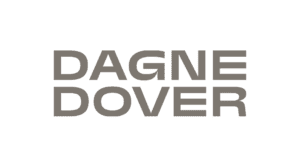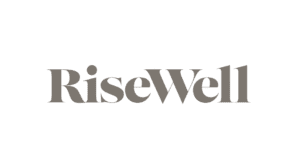Earlier this month, we hosted a higher education webinar alongside Google to outline some of the emerging trends and tactics that education marketing professionals should consider going into 2020. If you didn’t get the chance to attend the virtual summit, here are some key takeaways, trends, and data that we shared alongside Steph Schmitt from Google.
Education Digital Trends in 2020
A growing concern among many education institutions is the increase in restrictive budgets. Understanding how to navigate the ever-changing media landscape while introducing new potential students and nurturing others is one of the key components of circulating prospects through the consideration funnel.
Did you know that only 1/3 of admission officials say they reached their enrollment goals by the traditional May 1 deadline? For many institutions, this means that goals have to be readjusted after the deadline, and Google points to YouTube as the most cost-effective platform to get in front of prospective students early on in the decision making process.
An internal study produced by Google alludes to the fact that prospective students start with a limited number of colleges in mind, which continually narrows. There are an average number of 4 schools in a students’ initial consideration set and 75% of prospective students do not consider beyond their initial school and program list.

A closer look at the data
When we look at the state of the industry more broadly, education terms have grown every quarter in 2019, with Q4 showing the highest growth rate for the year. All degree types and most disciplines have seen growth in Q4 as students finalize their decision for the Spring admission period.
When we look at the same data from a non-brand (ex. medical school) versus branded (ex. specific schools) search point of view, we see a data trend that higher education can utilize when prioritizing marketing budgets strategically on a campaign level. “Overall, we saw a lot more growth in generic terms, so the non-brand is growing at 10%, whereas the branded search terms are growing at 4%,” Steph mentioned. In this case, many students know what kind of school they want to go to but they don’t know where.
“If you’re trying to grow a specific program, where we should be investing is based on where people are searching,” Steph adds. “For law schools, the data shows that most people know what school they want to apply to.” On the other hand, for cosmetology and applied sciences, people are much more unaware of the schools and programs that exist due to the high number of generic search queries.
Desktop versus Mobile
We’re seeing a growing trend among higher education to be hesitant to move funding from desktop to mobile. Although many organizations continue to see more leads coming in from desktop, Google data acknowledges that, while considering the full customer journey and attribution model conversation, more people are entering via mobile.
“Even if people are primarily filling out the forms on desktop, terms of where we are actually seeing the majority of advertising and growth is on the mobile side,” Steph mentions. The data trends between mobile and desktop are very close. While mobile tends to be more competitive (2.3 vs. 1.7) in regards to ad depth, CPCs are traditionally cheaper on mobile as competitors are still spending more on desktop. The average CTR is 3.6 on mobile versus 3.2 on desktop and the Q4 YoY Growth saw a staggering difference between 15.6% on mobile versus 1.0% on desktop.
Seasonality
As we look to data year over year from 2017 to the last Q4 close, we can see a consistent search pattern throughout the year. People are searching on a consistent basis and the volume of people searching throughout the year doesn’t fluctuate as much as organizations are led to believe.
“The volume of people searching throughout the year doesn’t change or fluctuate as significantly as often education clients’ budgets are shifting,” Steph mentions. “The goal of that is that in terms of when people are looking at all these other times that aren’t your highest enrolment season, this is when we should be significantly trying to get awareness out there to still be present when people are searching but not be as aggressive as the high enrolment times.”

YouTube for Higher Education
The most valuable EDU audiences are increasingly difficult to find on TV. 47% of all millennials and Gender Xers are “unreachable” – they are either cord cutters or cord nevers as we see an increasing shift to online video for both younger generations and matured audiences.
Why YouTube is good for higher education:
- Youtube has grown the past two years, being the number one mechanism that digital advertising is shifting toward. As people start to hit the wall of the lower funnel tactics such as search, both branded and non-branded, this the easiest way to scale and reach their audience in a cheap way.
- In 2020, we are expecting to see YouTube as the largest growth channel than any years past, lots of clients are finding it harder and more expensive to find new customers [or students] so they are looking to another route for customer acquisition.
- Scale + efficiency go hand in hand when using YouTube as part of your digital marketing strategy
- The target audience for future students is aligned with the YouTube audience
- High value prospects value digital video
- Students that enrolled are 9X more likely to cite digital video as the most influential resource in their decision process vs. dropouts from the process
“We know that video is influential in the digital process and the reason for that, the sight, sound and motion, being able to see and try to feel what a school will be like, versus reading on a website, can be much more engaging for students,” Steph concludes.
Want to learn more about how your school can benefit from a YouTube strategy? Request a free marketing analysis today.
The value of our Premier Google Partnership
Working with Google alongside our higher education clients helps us make informed decisions. Mason Interactive CEO Brook Shepard spoke about the exclusive vertical trend data that we are able to leverage from Google in order to help our clients strategize, plan and get the most out of their marketing budgets when meeting student enrollment deadlines and targets.
“The main benefit in Mason Interactive being a Google Premier Partner is that this is an exclusive partnership. Only the top 5% of agencies across the country are given the premier partner badge,” Steph Schmitt, Agency Development Manager at Google said. “The largest benefit that Mason Interactive has is the full team at Google that is staffed specifically to work on their agency, and their agency’s clients encompass most of that work.”
Frequent office visits, training our internal staff and ensuring that we are using all of Google’s latest technology capabilities holds Mason Interactive to high standards – in order to uphold our Premier status, we have to maintain a certain percentage of Google certified staff and stay up to speed on all of the latest Google product developments. “The main goal is to ensure that our best, top agencies are giving their clients the best results, and making sure that they are using all of Google’s products initially when they launch,” Steph adds.
Being able to have continuous access to competitive and industry information allows us to work closely with Google and our clients to give consistent and ongoing evaluation. By looking at where you’re stacking up, where you can improve, and acknowledging what your competitors are doing, we can set realistic growth goals and put together a unique solution to help you get there.






















